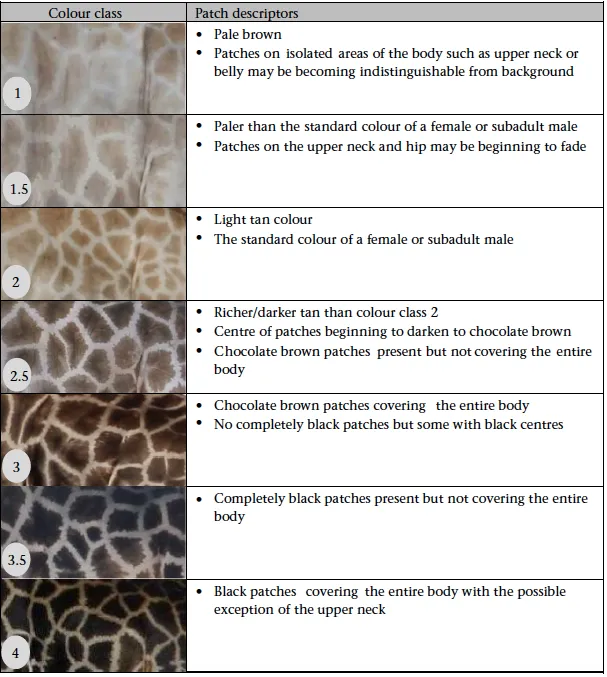Color of Giraffes’ Spots Reflects Social Status, Not Age
New research suggests male giraffes with darker coloring are more solitary, dominant than lighter-hued counterparts
/https://tf-cmsv2-smithsonianmag-media.s3.amazonaws.com/filer/4e/5e/4e5e5b38-0ba2-4cd1-8628-7bd2b5d88dc1/1024px-giraffe_close_up.jpg)
The color of a male giraffe’s spots may reveal insights on its behavior, new research suggests. As scientists led by Madelaine Castles of Australia’s University of Queensland report in the journal Animal Behaviour, dark-furred giraffes tend to be both more dominant and solitary than their lighter-hued counterparts.
These findings, based on a survey of 66 males living in Namibia’s Etosha National Park over a 12-year period, contradict previous research associating darker coloring with advanced age rather than social status.
Per Cosmos’ Tanya Loos, the latest study—drawing on 1,793 photographs and calculations of gregariousness versus sociability, as represented by time spent alone or within a group—supports the idea that most giraffes’ spots darken over time but identifies significant exceptions to this trend.
In a press release, Castles notes, “We now know that—rather than simply indicating age—colour may display males’ physical condition and be used as a way to signal competitive ability to others.”
Of the 66 subjects surveyed, nine actually grew paler as they aged. Others retained the light coloring seen in their youth, never making the switch from sienna brown to darker black. As the study’s authors explain, “This suggests that color is not solely an age-based trait but could be a secondary sexual trait.”

According to the statement, dark-hued males assert their dominance through what Castles calls an “often-successful but risky” mating strategy. Whereas paler male giraffes travel in packs with females, darker ones roam alone, moving between groups in search of potential mates.
“In contrast,” Castles says, “the lighter, less dominant males may be making the best of a bad situation so to speak, by remaining with females in the hope of getting lucky when a dominant male is not around.”
Staying in close proximity to females offers several benefits for younger subordinate males. Per the study, delaying breeding gives these giraffes time to grow and increase their physical fitness—a decision likely to “prove more beneficial over a lifetime.” At the same time, the researchers write, females in heat may be more willing to mate with familiar males than unknown ones.
According to Cosmos’ Loos, the researchers’ findings suggest giraffes’ coloring acts similarly to African lions’ manes, which signal bearers’ fitness to potential female mates. The study further notes that lions’ mane growth and coloring tend to change with age but are also influenced by a wide array of factors, including injuries, testosterone, nutrition and ambient temperature.
In the press release, study co-author Anne Goldizen, also of the University of Queensland, notes that scientists’ next step will be determining how color can signal a male giraffe’s physical condition.
Much like lions, she adds, giraffes’ “color could be linked to testosterone, to heat stress, diet, genetics or a combination of multiple factors.”
/https://tf-cmsv2-smithsonianmag-media.s3.amazonaws.com/accounts/headshot/mellon.png)
/https://tf-cmsv2-smithsonianmag-media.s3.amazonaws.com/accounts/headshot/mellon.png)
